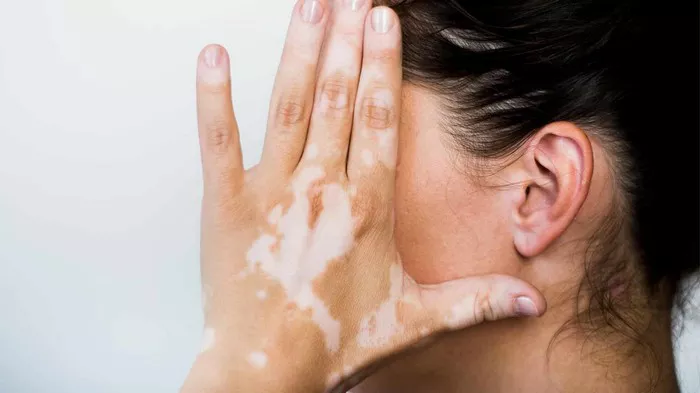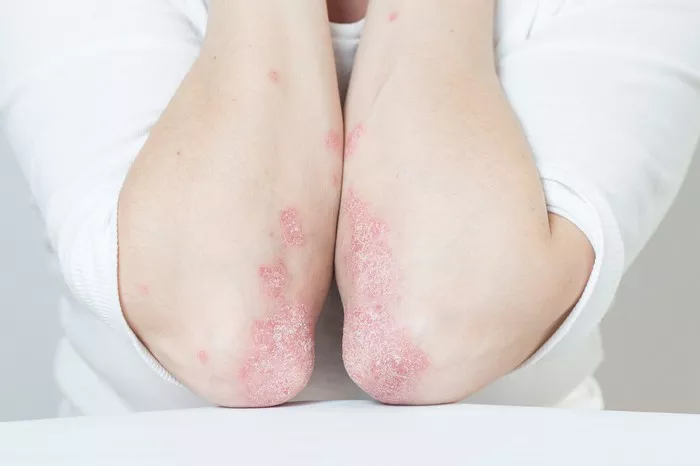Vitiligo is a skin condition that causes the loss of pigmentation, resulting in white patches on the skin. While the exact cause of vitiligo is not fully understood, it is widely accepted that autoimmune mechanisms play a significant role in its development. In this article, we will explore the autoimmune causes of vitiligo, how these causes affect the body, and what factors may contribute to this condition.
Understanding Autoimmunity
Autoimmunity occurs when the body’s immune system mistakenly attacks its own cells and tissues. In a healthy immune system, the body can differentiate between foreign invaders, such as bacteria and viruses, and its own cells. However, in autoimmune diseases, this balance is disrupted. The immune system identifies certain body tissues as threats and launches an attack against them.
What is Vitiligo?
Vitiligo is characterized by the loss of melanocytes, the cells responsible for producing melanin, the pigment that gives skin its color. The result is uneven skin tone, with patches of lighter skin appearing alongside normally pigmented areas. Vitiligo can affect any part of the body, including the face, hands, and genitals, and can occur in people of all skin types.
Types of Vitiligo
There are two main types of vitiligo:
Non-segmental vitiligo: This is the most common type. It typically appears symmetrically on both sides of the body and may spread over time.
Segmental vitiligo: This type usually develops in a localized area and tends to stabilize quickly, showing less progression compared to non-segmental vitiligo.
SEE ALSO: What Is the Reason for White Patches on Skin?
How Autoimmunity Causes Vitiligo
1. Immune System Dysfunction
In vitiligo, the immune system targets and destroys melanocytes. This process is believed to be triggered by various factors, including genetic predisposition and environmental influences. When the immune system is dysfunctional, it can mistakenly recognize melanocytes as foreign cells and attack them.
2. Genetic Factors
Research has shown that there is a genetic component to vitiligo. Certain genes are associated with an increased risk of developing autoimmune diseases, including vitiligo. If you have a family history of autoimmune conditions, your risk of developing vitiligo may be higher. Some of the genes associated with vitiligo include:
NLRP1: This gene is involved in the immune response and inflammation. Variants in this gene may increase susceptibility to vitiligo.
CTLA4: This gene regulates T-cell activation, which is crucial for immune responses. Variants may lead to an increased risk of autoimmune diseases.
3. Environmental Triggers
Various environmental factors can trigger the onset of vitiligo in genetically predisposed individuals. These triggers can include:
Sunburn: Severe sunburn can damage the skin and may trigger an autoimmune response.
Chemical Exposure: Contact with certain chemicals, such as phenolic compounds found in hair dyes and other products, has been linked to the onset of vitiligo.
Stress: Physical or emotional stress may trigger autoimmune responses in susceptible individuals.
4. Other Autoimmune Conditions
Vitiligo often occurs alongside other autoimmune diseases. The presence of multiple autoimmune conditions in an individual is known as “autoimmune polyendocrine syndrome.” Some of the autoimmune diseases commonly associated with vitiligo include:
Thyroid Disorders: Conditions such as Graves’ disease and Hashimoto’s thyroiditis can occur alongside vitiligo.
Alopecia Areata: This condition causes hair loss in patches and is another autoimmune disorder linked to vitiligo.
Type 1 Diabetes: Individuals with type 1 diabetes may also have a higher risk of developing vitiligo.
The Role of Melanocytes
Melanocytes are specialized cells located in the epidermis, the outermost layer of the skin. Their primary function is to produce melanin, which provides color to the skin, hair, and eyes. When melanocytes are destroyed, melanin production ceases, leading to the characteristic white patches of vitiligo.
Immune Response Against Melanocytes
The immune system’s attack on melanocytes may be due to the following:
Autoantibodies: Some studies suggest that the body may produce autoantibodies against melanocytes, targeting them for destruction.
T-cell Activation: T-cells, a type of white blood cell, may become activated against melanocytes, leading to their destruction. This is a key feature of many autoimmune diseases.
Diagnosis of Vitiligo
Diagnosing vitiligo typically involves a thorough medical history and physical examination. A healthcare provider may ask about:
Family History: Any history of autoimmune diseases in the family.
Skin Changes: When the white patches first appeared and if they have changed over time.
Associated Symptoms: Any other symptoms that might suggest an autoimmune condition.
Skin Examination
A dermatologist may perform a skin examination to assess the extent of vitiligo. In some cases, a Wood’s lamp may be used to illuminate the skin, making it easier to see the depigmented areas.
Biopsy
In certain situations, a skin biopsy may be conducted to confirm the diagnosis. The biopsy involves taking a small sample of skin for laboratory analysis. This can help rule out other conditions that may cause skin discoloration.
Treatment Options for Vitiligo
While there is no cure for vitiligo, several treatment options are available to help manage the condition and improve skin appearance.
1. Topical Treatments
Corticosteroids: These anti-inflammatory creams can help restore pigment in some individuals, especially if used in the early stages of the disease.
Calcineurin Inhibitors: Medications like tacrolimus can help suppress the immune response and promote repigmentation.
2. Phototherapy
Phototherapy involves exposing the skin to ultraviolet (UV) light. This treatment can help stimulate melanocyte activity and repigmentation in affected areas. Common phototherapy options include:
Narrowband UVB Therapy: This treatment uses a specific wavelength of UV light that is effective in promoting repigmentation.
PUVA Therapy: This method combines a medication called psoralen with UVA light exposure to enhance skin pigmentation.
3. Depigmentation Therapy
For individuals with widespread vitiligo who wish to achieve a more uniform skin tone, depigmentation therapy may be an option. This involves the use of medications that lighten the remaining pigmented skin to match the depigmented areas.
4. Surgical Options
In some cases, surgical procedures may be considered. These options include:
Skin Grafting: Involves transferring small pieces of healthy, pigmented skin to the depigmented areas.
Melanocyte Transplantation: This technique involves isolating and transplanting melanocytes from one area of the body to another.
5. Psychological Support
Living with vitiligo can be emotionally challenging. Individuals may benefit from psychological support to help cope with the impact of the condition on self-esteem and body image. Support groups and counseling can provide valuable resources for emotional well-being.
Lifestyle and Home Remedies
While medical treatments can help manage vitiligo, certain lifestyle changes and home remedies may also be beneficial.
1. Sun Protection
Protecting the skin from sun exposure is crucial for individuals with vitiligo. Using sunscreen with a high SPF can prevent sunburn and further skin damage. Additionally, wearing protective clothing and seeking shade can help safeguard the skin.
2. Healthy Diet
Maintaining a balanced diet rich in antioxidants can support overall skin health. Foods high in vitamins C and E, zinc, and omega-3 fatty acids may promote skin health and boost the immune system.
3. Stress Management
Since stress can exacerbate autoimmune conditions, practicing stress-reducing techniques like yoga, meditation, and deep breathing exercises can be beneficial for overall well-being.
Conclusion
Vitiligo is a complex autoimmune condition that results from the immune system’s attack on melanocytes, leading to the loss of skin pigmentation. While the exact cause of vitiligo is not fully understood, genetic predisposition, environmental triggers, and the presence of other autoimmune diseases contribute to its development.
While there is no cure for vitiligo, various treatment options are available to manage the condition and improve the skin’s appearance. Understanding the autoimmune causes of vitiligo is crucial for effective management and treatment. With the right support and care, individuals with vitiligo can lead fulfilling lives while navigating the challenges of this skin condition.
Related topics:



























